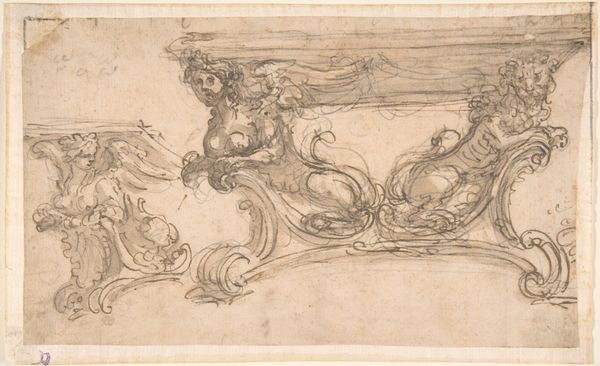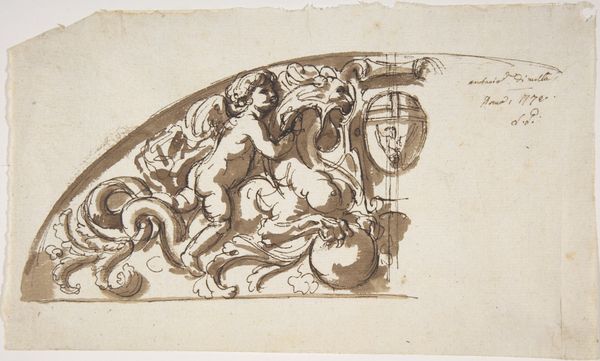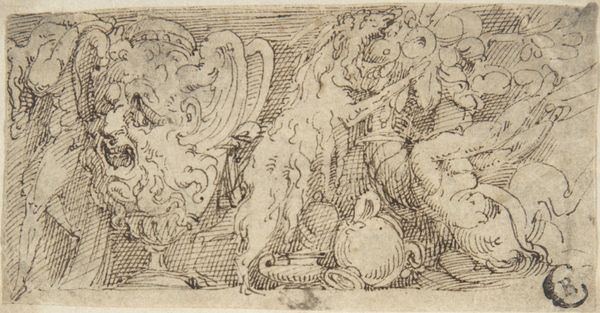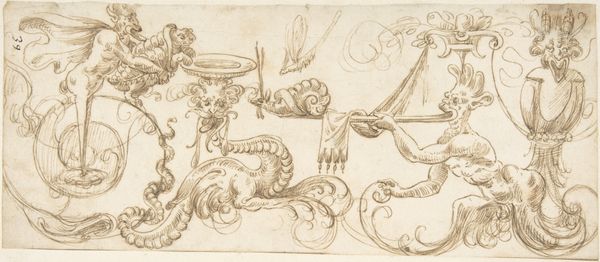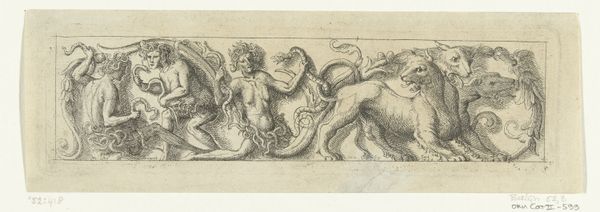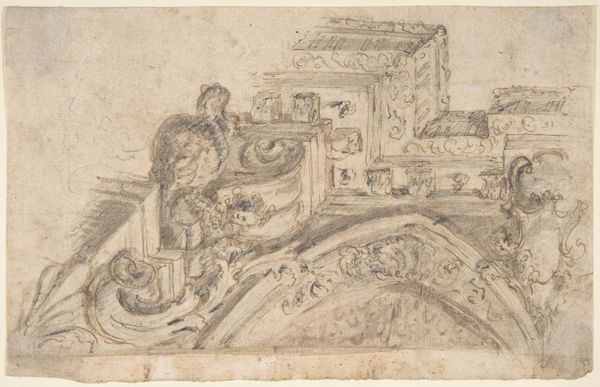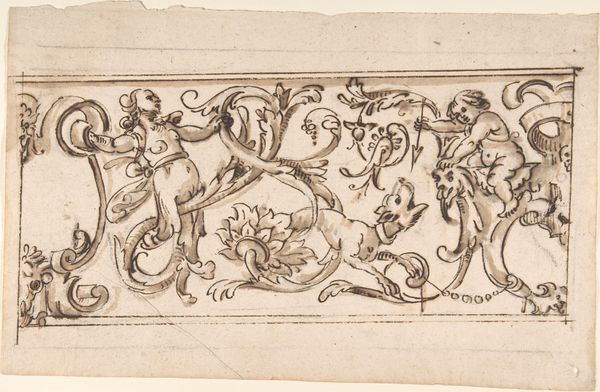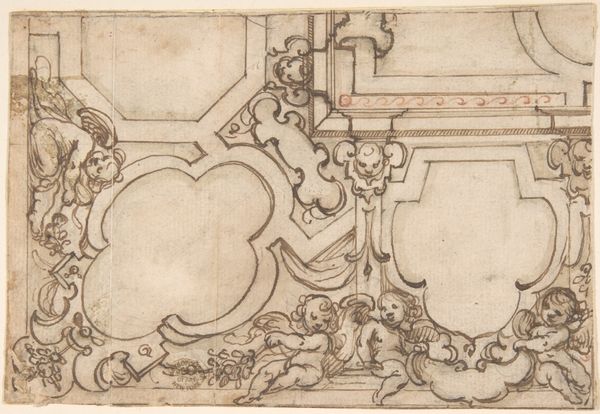
Ornamental Design of Winged Female Figures and Dragons 1600 - 1700
0:00
0:00
drawing, paper, ink
#
drawing
#
figuration
#
paper
#
11_renaissance
#
ink
Dimensions: 1 15/16 x 3 1/8 in. (4.9 x 7.9 cm)
Copyright: Public Domain
Curator: This ink drawing on paper, made anonymously sometime between 1600 and 1700, is titled "Ornamental Design of Winged Female Figures and Dragons." It's currently housed here at the Metropolitan Museum of Art. Editor: It strikes me as something unearthed—a fragment of a larger story, or a fleeting, half-remembered dream. Curator: The artist was definitely engaging with classical mythology and the grotesque tradition. I see echoes of the power dynamics between men and beasts explored throughout history, particularly as manifested through the female form. It asks the questions: what cultural anxieties or desires might these figures reflect? How do these gendered representations challenge or reinforce prevailing power structures? Editor: From a purely material perspective, the roughness of the line work really brings to mind the artisan's hand at work. You can imagine the quick, deft movements they must have made with the quill or pen. The material constraints themselves must have dictated how the forms emerged—each stroke bearing witness to both intention and accident. What level of control did they have, really? Curator: Yes, but consider also the choice to depict hybrid figures—part human, part animal. In these kinds of renderings, we see a liminal space occupied by women where monstrous beauty troubles boundaries around what's considered natural or unnatural, feminine or masculine. This could signal cultural unease regarding female power during the period it was made. Editor: Agreed, the act of drawing itself can be seen as a kind of "labor," with the artist meticulously shaping these figures through a repeated series of marks. It's clear how each incremental addition reveals a layered story about process as the dragon or the woman came into existence via the labor of the artist’s hand. Curator: These early modern representations helped define normative standards, shaping contemporary gender and cultural theory to this day. What remains fascinating is that they did so via images, some of which continue to haunt and inform visual and gender politics, Editor: What lingers with me is the texture. The surface seems almost aged, carrying traces of time and use which subtly changes the narrative of each line and the stories of the figures on view here.
Comments
No comments
Be the first to comment and join the conversation on the ultimate creative platform.



